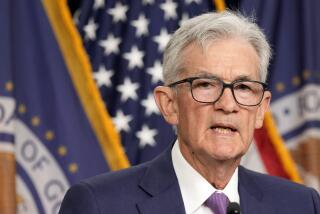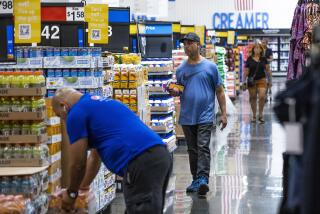Federal Reserve inches closer to interest rate hike

The march toward the first increase in a key interest rate since 2006 picked up pace as Federal Reserve policymakers indicated Wednesday that economic conditions are improving.
After a two-day meeting, officials voted to keep the central bank’s benchmark short-term rate near zero, as expected.
Their monetary policy statement, however, pushed the door open a little wider to a rate hike at the next meeting in September, though they didn’t lock in such a step in case upcoming economic data fall short of expectations.
“They’re closer … than they were at the last meeting,” said John Silvia, chief economist at Wells Fargo Securities. “I think the labor market has improved enough. That’s not the issue. The make-or-break issue is inflation.”
The Fed’s policy statement, approved by a 10-0 vote, said recent data suggest that the economy “has been expanding moderately in recent months” and that the housing market “has shown additional improvement.”
The policymakers’ view of the labor market improved from last month; their statement cited “solid job gains and declining unemployment.”
And they made “a subtle but potentially important shift” in a key condition to an interest rate hike, said Ian Shepherdson, chief economist at Pantheon Macroeconomics.
In June, Fed officials said a rate hike would be appropriate when there was “further improvement in the labor market.” Wednesday’s statement said central bank officials would raise the so-called federal funds rate when there was “some further improvement in the labor market.”
The addition of the word “some” indicated that “not much more improvement is needed,” Shepherdson said.
The next two monthly employment reports before the Fed meets again are expected to show strong gains in jobs, making a rate hike in September more likely, he said.
Kathy Bostjancic of economic forecasting firm Oxford Economics agreed that Fed officials “only need to see ‘some’ further improvement in the labor market.” The statement “continues to prepare markets for a September rate lift-off,” she said.
Still, Fed policymakers raised concerns as well.
Business investment and exports have been soft, for instance. More important, inflation continued to run well below the Fed’s 2% annual target.
Policymakers attributed the lower inflation rate partly to declines in energy prices as well as the lower cost of imports caused by the rising value of the dollar. A government index for what consumers pay for goods and services rose just 0.2% for the 12 months that ended May 31.
Inflation has been the second condition for raising the rate. Policymakers said Wednesday that they would have to be “reasonably confident” that the low rate would move back toward the Fed’s annual goal in the next few years before acting.
The central bank has kept its benchmark federal funds rate near zero since December 2008 to help boost economic growth during and after the Great Recession.
As the economy has strengthened, pressure has built on the central bank to start raising the rate.
Fed Chairwoman Janet L. Yellen has said that she expected an interest rate hike this year but that policymakers would continue to keep rates low for “quite some time” to continue providing support for the economy.
A survey last month by financial information website Bankrate.com found that a majority of Wall Street experts expected the Fed to raise the rate in September. After Wednesday’s policy statement, Silvia said he’s sticking with his forecast for a hike in September.
For Fed policymakers, the first new economic data will come Thursday.
The Commerce Department is expected to report that growth in the nation’s gross domestic product, or total economic output, returned this spring. Analysts are forecasting that the economy expanded at a 2.9% annual rate in the second quarter.
The economy shrank at a 0.2% annual rate from January through March, largely because of unusually bad winter weather and a labor dispute that slowed activity at West Coast ports.
More to Read
Inside the business of entertainment
The Wide Shot brings you news, analysis and insights on everything from streaming wars to production — and what it all means for the future.
You may occasionally receive promotional content from the Los Angeles Times.











